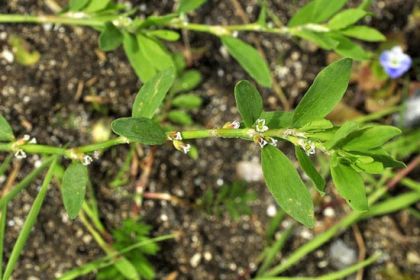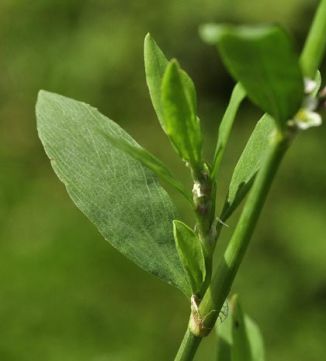Sprawling, spreading across waste places, arable fields, roadsides and seashores, this plain, weedy, very variable, low growing – sometimes completely prostrate - wildflower is best viewed through a hand-lens where its tiny little flowers come as quite a surprise. When viewed closely, these small, white – sometimes pink - flowers (1-2mm across) have green centres and they emerge from leaf axils, sometimes solitarily, sometimes in small clusters. They bloom from June to November. The leaves are oval with the junction between them and the stem surrounded by an ochrea or papery sheath. The stem leaves on this plant are larger than the leaves on the side branches. This native plant is an annual and it belongs to the Polygonaceae family.
I first identified this plant at Laragh, Co Wicklow in 1976 and photographed it at Ballyteigue Burrow, Co Wexford and The Rine, Co Clare in 2009.
If you are satisfied you have correctly identified this plant, please submit your sighting to the National Biodiversity Data Centre




